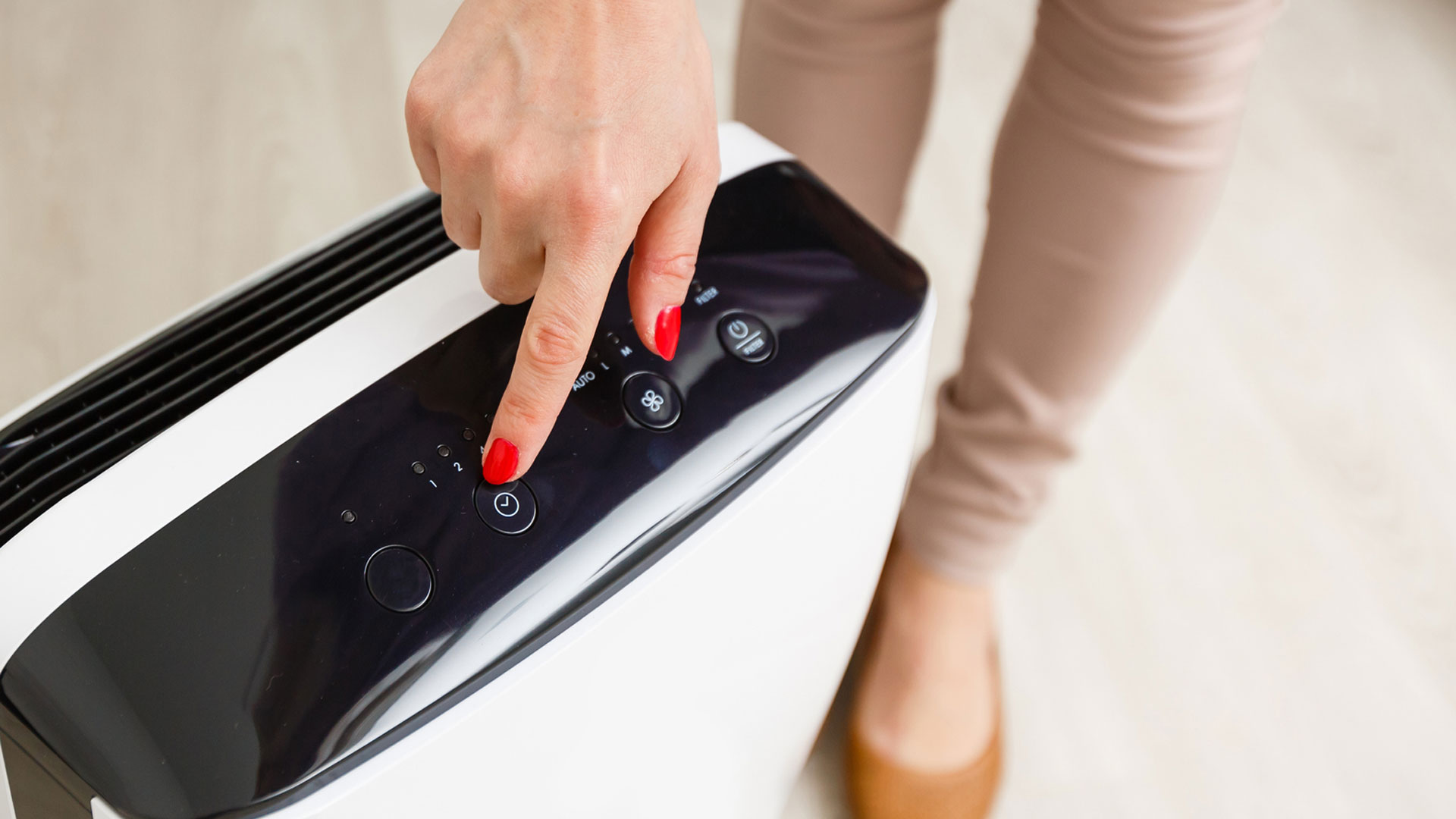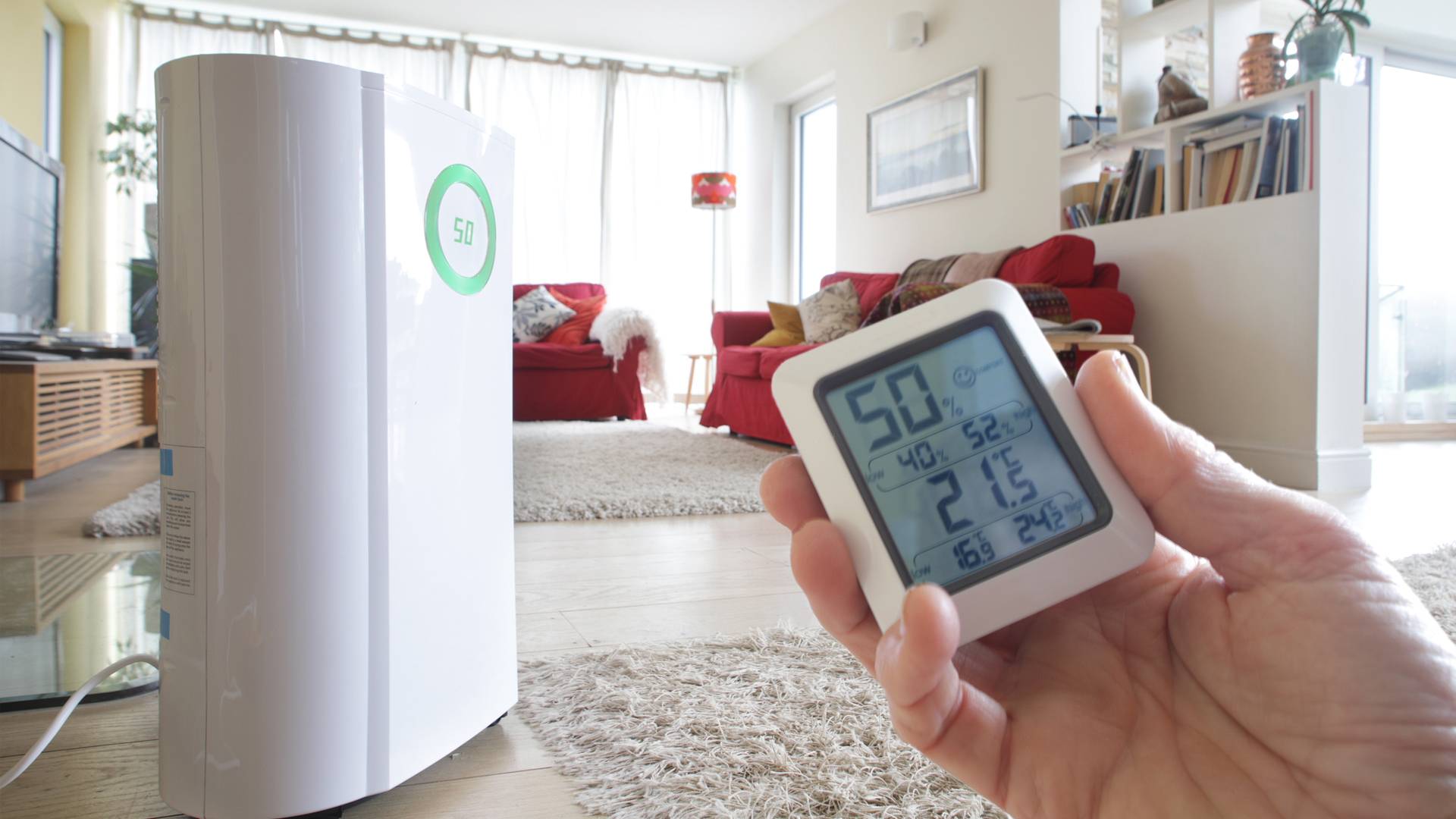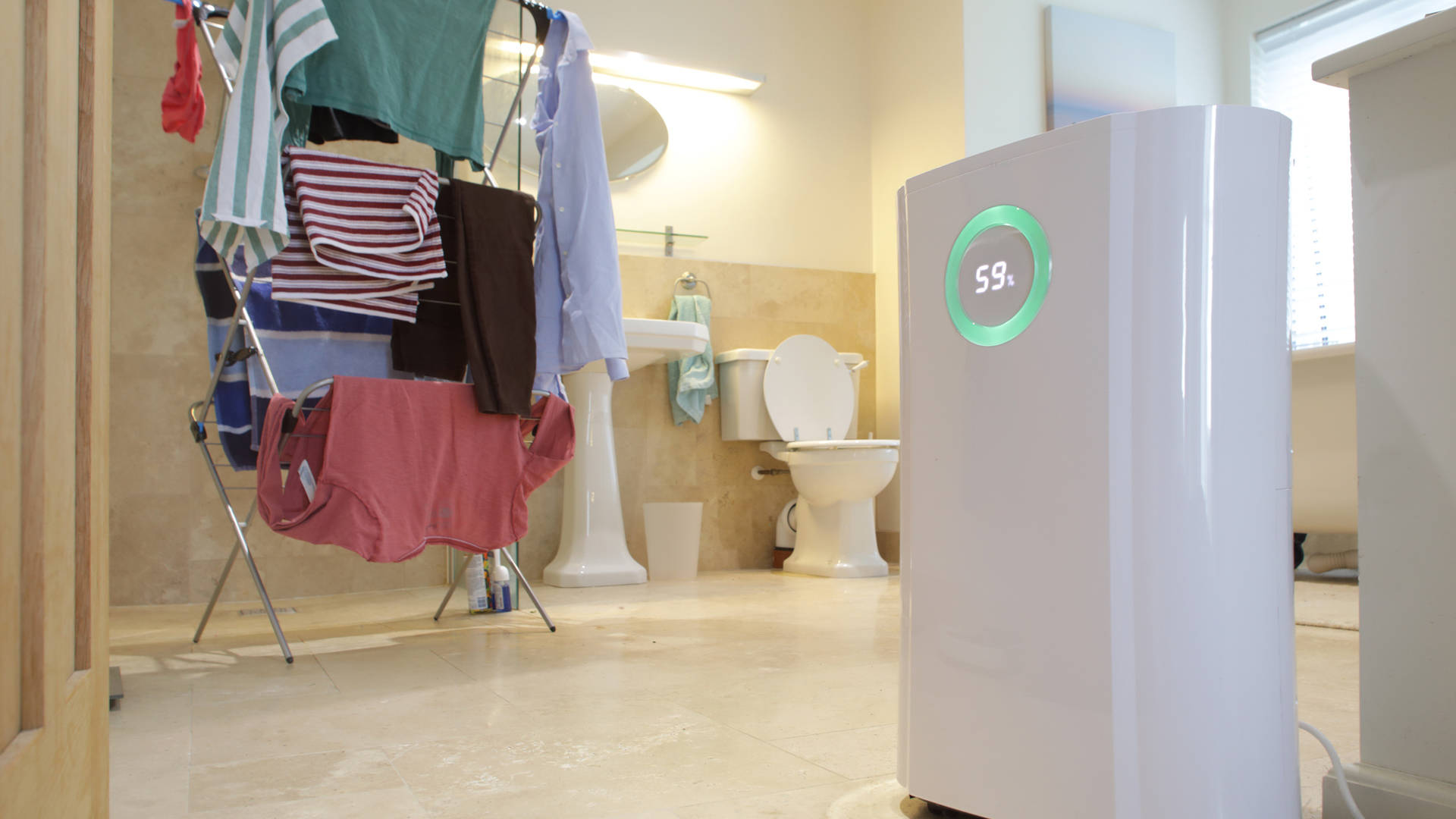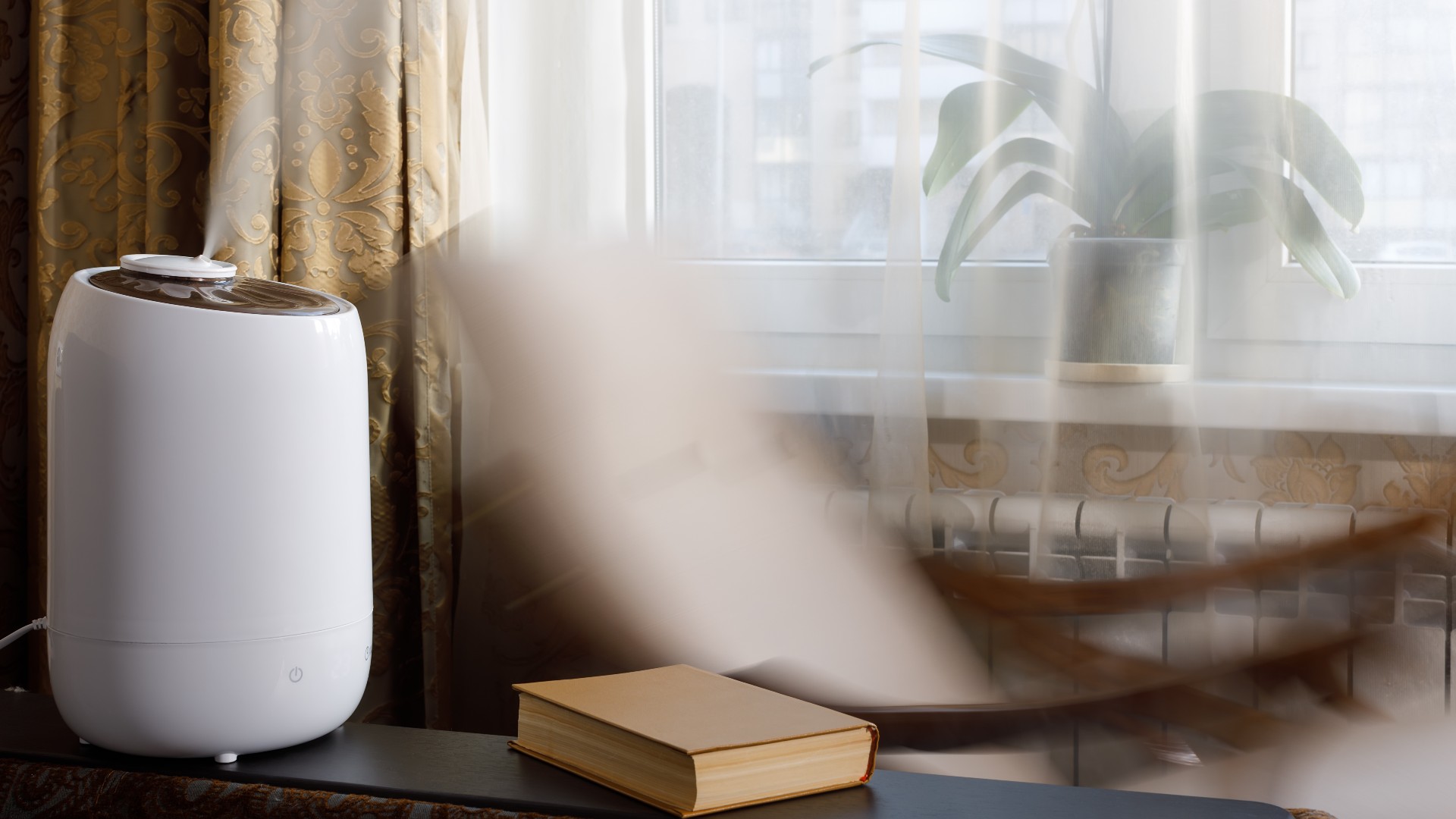Dehumidifier vs humidifier: Which is best for your home?
When it comes to a dehumidifier vs humidifier, what’s the difference between each piece of tech and which is best for your environment?

Dehumidifier vs humidifier: what’s best for your space? The quality of the air we breathe is an important factor when it comes to our day-to-day health and wellbeing and ensuring you have the right device to keep it at an optimal level is crucial.
Suffer from dry skin or experience respiratory problems? These are both symptoms associated with dry indoor air. And while one of the best humidifiers won’t completely solve your asthma, wheezing or coughing, it can go a long way to help relieve these symptoms.
On the other hand, if you’re experiencing heavy condensation on your windows, mold growth or signs of damp, the best dehumidifiers could help to make your space a whole lot more comfortable to live in by reducing the humidity levels.
But how do these clever pieces of tech work? And how do you know whether your space needs a dehumidifier vs humidifier? To get to the bottom of these questions we spoke to experts from the Centers for Disease Control and Prevention (CDC) and the U.S. Environmental Protection Agency (EPA) to unpick the differences between the two and discover just how beneficial they could be.
Dehumidifier vs humidifier: What do they do?
If you’re looking into your indoor air humidity and wondering what humidity is comfortable to live in, you might have heard of a dehumidifier and humidifier. But what exactly do these machines do?
A spokesperson from the CDC told us: “Humidifiers add moisture to the air. Dehumidifiers remove moisture from the air.”
According to research published in Advanced Science, conventional cooling-based dehumidifying systems: “Dehumidify air by cooling it below the dew point temperature to remove moisture via condensation, and then reheating it to the desired temperature.”
This helps to improve indoor air quality which in turn reduces the likelihood that mold, bacteria, and fungi can take up residence, as they prefer moist environments for growth.

A humidifier does the opposite of that, adding moisture to indoor air which can help to relieve some symptoms associated with hot and humid air, like dry throat or dry eyes.
Humidity levels are measured in relative humidity (RH). According to the American National Standards Institute, when it comes to what humidity is comfortable, maintaining a RH level of between 30% and 60% is key in habitable spaces.
Which is why the CDC says: “To reduce the chance of mold growing in your home from high humidity, use a dehumidifier to maintain low indoor humidity below 50%, or ideally 30% to 50% if possible.”
Dehumidifier vs humidifier: What are the benefits?
According to a review published in the Environmental Health Perspectives, relative humidity can “affect the incidence of respiratory infections and allergies”. It can also impact the ability for viruses to survive or mold to grow. But that’s where the best dehumidifiers and humidifiers come in.
Dry air, which is often present in deserts, cities or hot climates, can be made more comfortable to live and breathe in with the use of a humidifier, while a dehumidifier can be helpful in controlling indoor humidity as part of an overall plan for moisture and humidity control in a room or building.
However, the benefits that these pieces of tech bring are only benefits if they are cleaned and used correctly. Overusing a humidifier can bring about mold and damp.
And as the EPA spokesperson added: “Proper care and cleaning of humidifiers is important, particularly ultrasonic and impeller (or "cool mist") humidifiers, otherwise they have the potential to disperse materials, such as microorganisms and minerals into the air.”
If you are unsure on how to use your humidifier or dehumidifier, be sure to check the instructions and the user manual before switching on. You might also find our guides to how to clean your humidifier and how to clean a dehumidifier useful in helping you to maintain these devices.
Dehumidifier vs humidifier: What can they help with?
As research published in Procedia Engineering has proven, high levels of indoor air humidity (IAH) promotes the growth of mold, dust mites, and mildew on building surfaces.
But dehumidifiers can help with this, including:
- Reducing mold and mildew
- Putting a stop to musty damp odors
- Minimizing condensation, like on your windows
- Reducing damp air
- Ridding pests in your home, such as cockroaches, moths, or silverfish

While the benefits of a humidifier include:
- Preventing dryness in your space
- Acting as a natural moisturizing agent

According to research, a humidifier can help to battle against high levels of indoor air humidity which can bring about dryness of skin, sensory irritation of eyes, static electricity and persistent respiratory problems like bronchitis, asthma and influenza.
However, it’s important to note that a humidifier won’t solve these respiratory problems completely. But it can help with alleviating some symptoms.
Dehumidifier vs humidifier: Which is right for you?
If the air in your home or a specific room feels damp — and the RH level is above 60%, you may need a dehumidifier. If your your home or space feels hot, stuffy and dry — and the RH level is measuring below 30%, you may need a humidifier to add some moisture to the air.
A EPA expert added: “If you are concerned about overly moist air (high humidity), then a dehumidifier may be appropriate. Generally, if you are concerned about dry air (low humidity) then a humidifier may be appropriate.”
However, it is important to stop the use of a humidifier and adjust the settings if you notice water condensing on surfaces or mold growth.
Sign up for the Live Science daily newsletter now
Get the world’s most fascinating discoveries delivered straight to your inbox.
Becks is a freelance journalist and writer writing for a range of titles including Stylist, The Independent and LiveScience covering lifestyle topics such as health and fitness, homes and food. She also ghostwrites for a number of Physiotherapists and Osteopaths. When she’s not reading or writing, you’ll find her in the gym, learning new techniques and perfecting her form.











